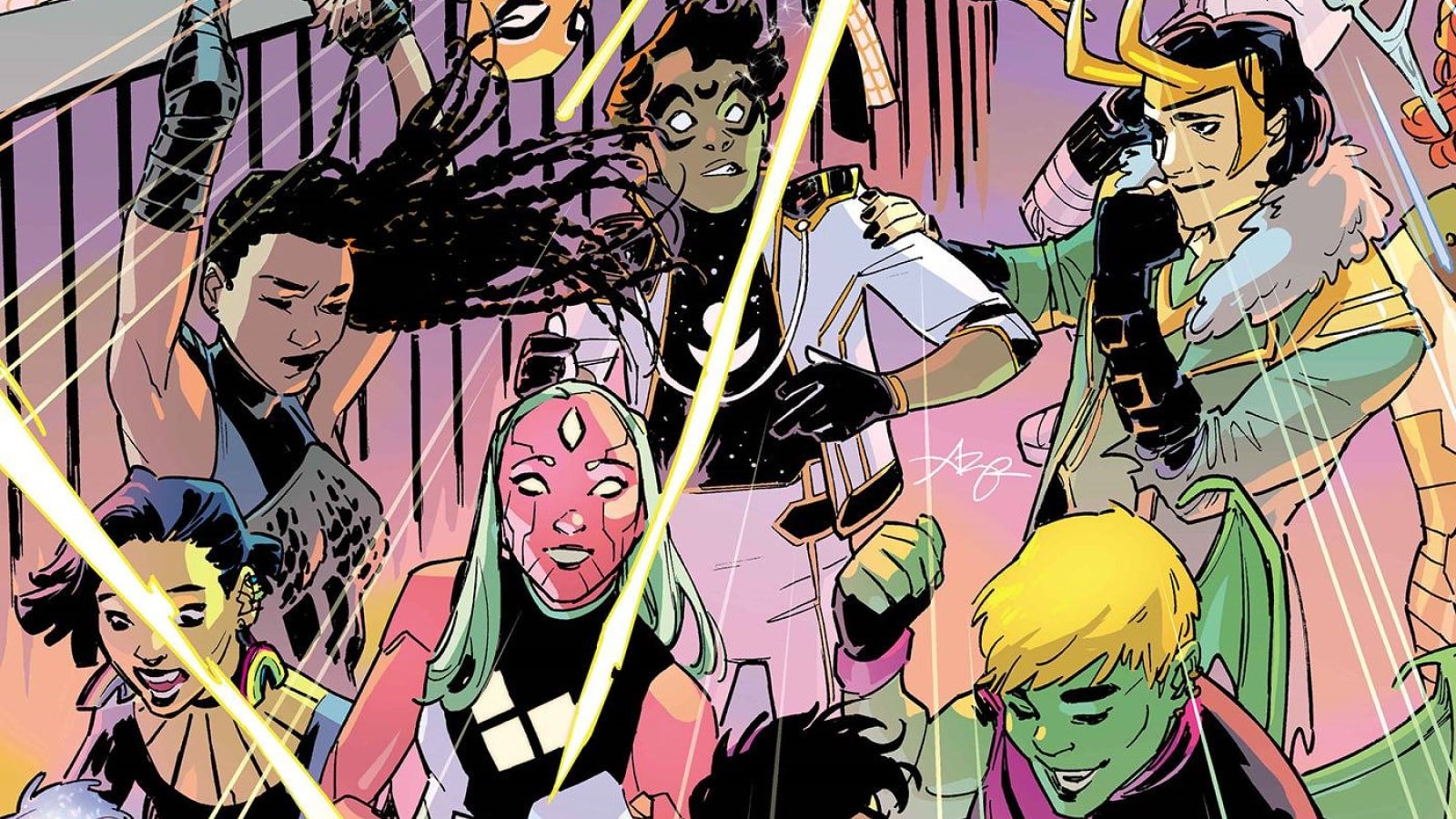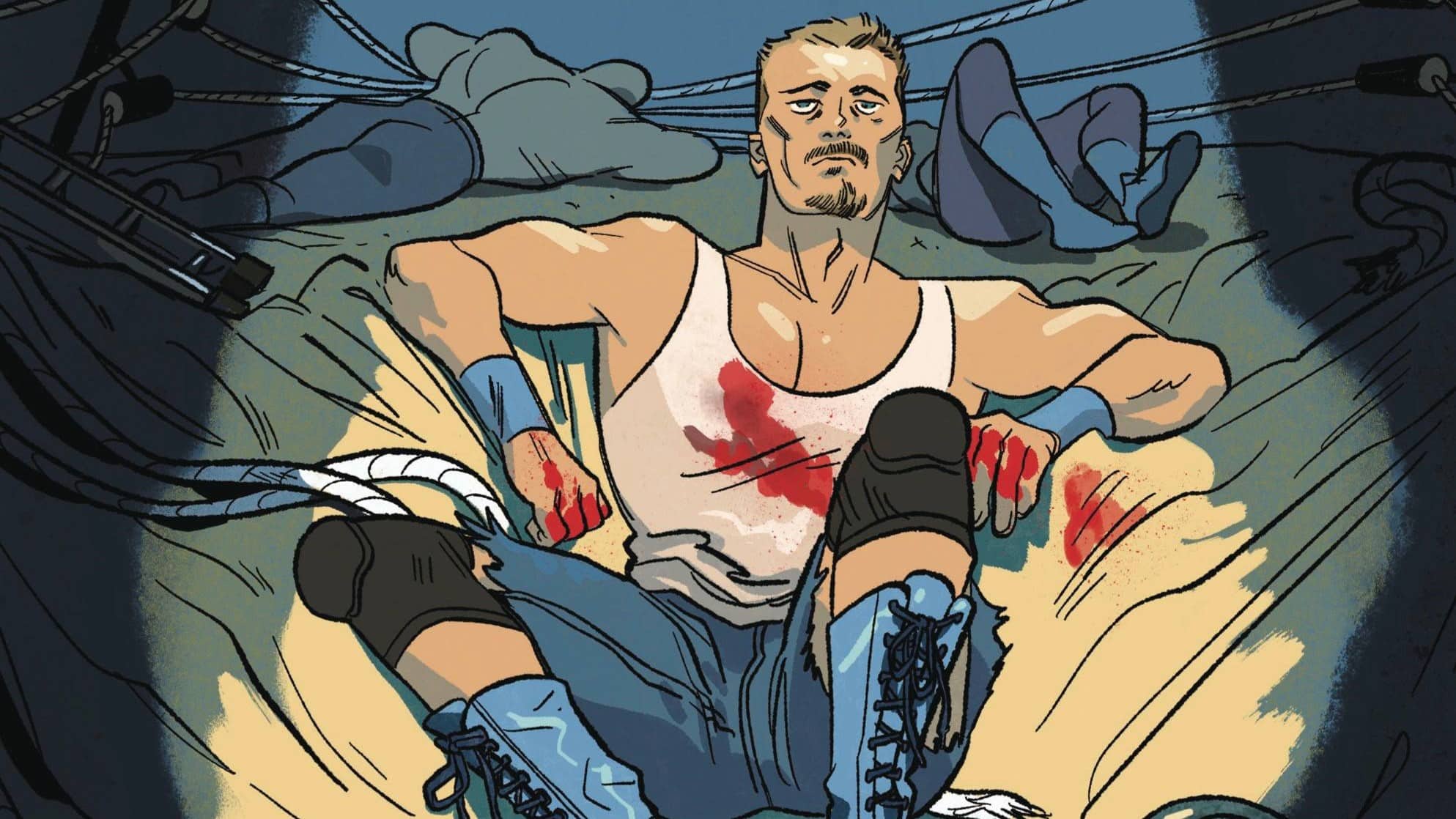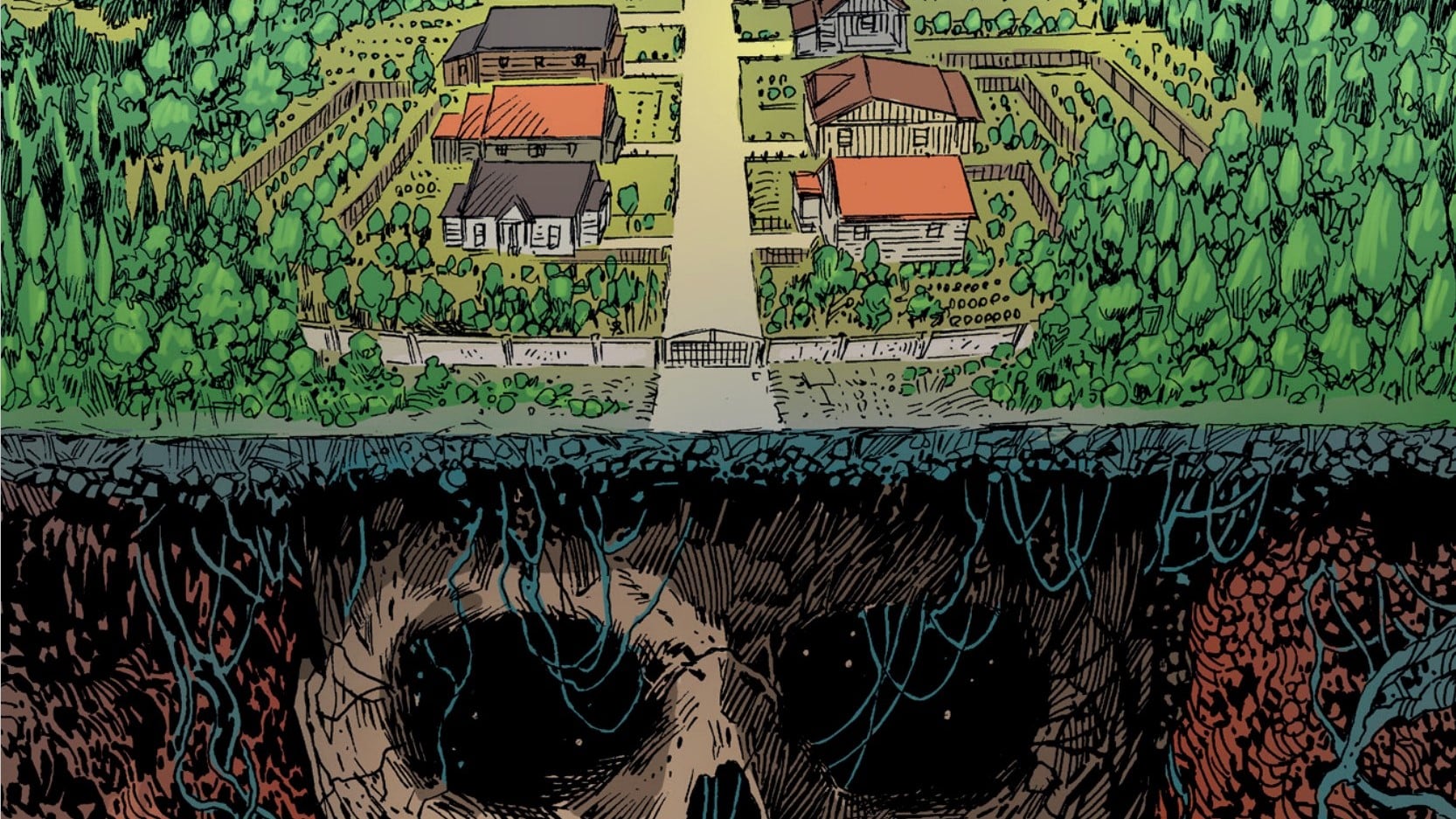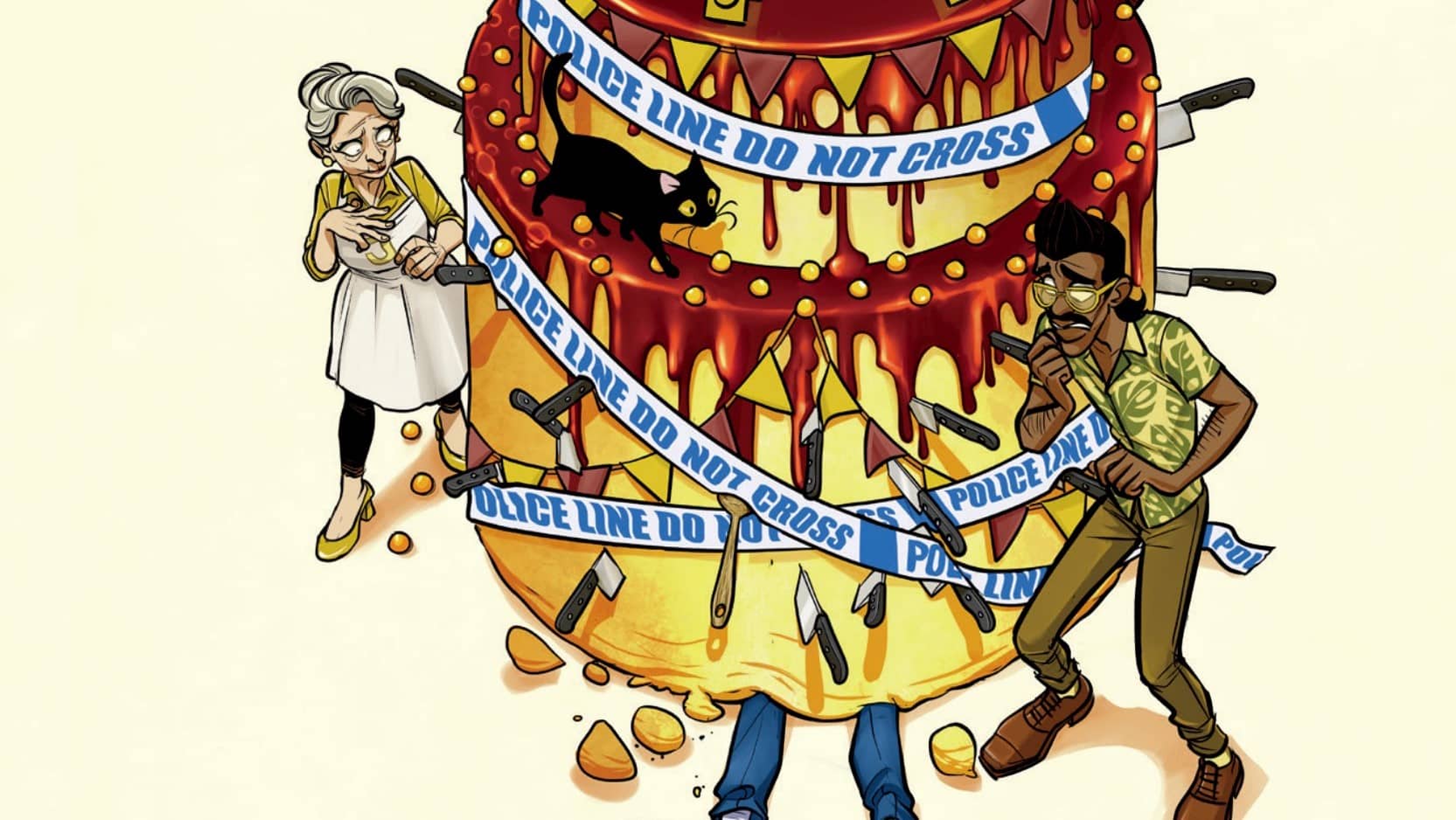What do you mean that cool thing that happened to me when I was a kid never actually happened? Aw, hell. Alice Ever After #1 is written by Dan Panosian, illustrated by Giorgio Spalletta and Panosian, colored by Fabiana Mascolo, lettered by Jeff Eckleberry and published by BOOM Studios.
Go West, young woman. And be sure to take along your coffin. And the Confederate Civil War veteran who helps you prey upon the scumbags of the late 19th century in West of Sundown #1, written by Tim Seeley and Aaron Campbell, drawn by Jim Terry, colored by Triona Farrell, lettered by Crank! and published by Vault.
Shut the hell up already, Dylan. Rogue Sun #2 is written by Ryan Parrott, drawn by Abel and Francesco Mortarino, colored by Chris O’Halloran, lettered by Becca Carey and published by Image.
Will Nevin: Ian, do you think this might be another week your dad skips our column? Let’s just assume he will; I mean, that’s what I’m assuming at least. Anyway, here’s a question for you: Have you ever engaged in any … mind-altering substances? You know, aside from the normie stuff like caffeine and too much late-stage Frank Miller?
Ian Gregory: I’ve got bad news. Ever since we called out my dad for reading my columns, he’s been regularly texting me about my reviews. So, let’s say, purely hypothetically, a person was in college and was attending a show by hit indie country band Pinegrove in the basement of a house in central Pennsylvania, and that hypothetical person took something similar to, but not necessarily, ecstasy, and that person was also on SSRIs, and the result was that this person had an eight-hour manic period with no other mind-altering effects. Let’s just assume I’m talking from this hypothetical point of view.
Will: Sounds like that could totally happen to anyone attending a show by hit country indie band Pinegrove in a basement in a house in central Pennsylvania. Truly, we’ve all been there. Theoretically.
Alice Ever After #1: Huh?

Will: Alice’s Adventures in Wonderland, a novel written by noted nude child drawer and photographer Lewis Carroll, was published in 1865 and has been subsequently translated and adapted into any number of other derivative works, including Carroll’s own sequel Through the Looking-Glass in 1871. Here, thanks to the wonders of public domain works, we’ve got a comic book sequel with a grown-up Alice who can’t quite shake her Wonderland memories or her reliance on the pills that get her there.
Ian, I’m going to be honest: I’m lost as fuck. None of these characters means anything to me — I get the basic premise here and not much else. Does someone have to read the book? Skim a summary? Pop in a Disney DVD? How do we make this thing accessible?
Ian: Will, have you ever seen those internet theories about popular media? Theories like “Ferris Bueller isn’t real” or “Sandy is dead in the movie Grease.”
Will: You mean those shit things that CBR will write up in a 300-word article because some moron farted out a message board post? Yeah, Facebook tricks me into reading those all the time.
Ian: These have been popular online for a long time, and they all share a common theme: a basic refusal to engage with themes and meaning of works, searching for cop-out “explanations” for fantastical or otherwise inexplicable elements. Sure, Ferris Bueller is a larger-than-life character who introduces magic and rebellion into the lives of his friends, but that doesn’t mean he has to be “imagined” within the narrative. Similarly, sure, Sandy in Grease goes through an unbelievable transformation of character, but that’s because the moral of Grease is that women should change their core identities to appeal to men, not because she’s dead.
Similarly, Alice Ever After declines to engage with more than the basest terms of the plot of Alice’s Adventures in Wonderland. Wow, isn’t it neat that Alice maybe was on drugs and that’s why all those fantastical things happen to her? No, it isn’t neat. This is the comic equivalent of a Reddit post from 2009. I am not engaged, I am disappointed.
Will: All of my lostness aside, this is at least a good lookin’ book. Panosian *probably* handles most of the art here, but his style is so malleable, if you told me he did the Wonderland pages and Spalletta handled the bulk, I’d believe you.
Ian: Artistically, I like the way this book is constructed. Everything is at odd angles, and even the “real world” feels supernatural. Artistically, I don’t have any real complaints.
Will: It could have been good, right?
Ian: I dunno, maybe with like, a different premise and a different writer.
Will: That’s a different book, Ian.
Ian: Precisely. I’m glad we understand each other.
West of Sundown #1: Let’s Go Bleed Some Rockefellers

Will: Our newest comic book vampire yarn opens the day after the First Battle of Bull Run on July 22, 1861, with Irish transplant Dooley O’Shaughnessy digging graves in the Confederate army — only to find one plot with a not-quite-dead occupant. Thus begins a symbiotic relationship with Miss Constance Der Abend, a vamp with something of a heart of gold who only targets the robber barons, one-percenters and other assorted bandits of the 1860s and ’70s. We don’t get much outside of the basics — Miss Constance and Dooley move from Virginia to New York before the pair is forced out West to return to the soil from which the former was born unto death — but I liked what we got here. This thing has potential.
Ian: We’ve got a lot of new vampire comics lately, but I’m not complaining. If Twilight led to a vampire craze that sucked all the air out of the genre, then I’m glad we’re getting a resurgence. A running trend in the vampire books we’ve read is a tendency to be sympathetic toward the vampires, who often find themselves in situations in which they must hurt or die. However, Constance Der Abend (“The Evening,” also a Brahms song, and maybe a little on the nose) is also something of a vampire vigilante, which is a pleasant twist. And while Dooley may be somewhat in doubt about Constance’s motives, I have no such compunctions; maybe your opinion is decided by how much you know about the Gilded Age.
Will: Fuck them rich folks. I’ve talked about this with my BatChat bud Matt Lazorwitz, but my general outlook is that lettering should be conservative (It’s got the one job: Be. Readable.) whereas layouts can take more chances, and I liked some of the more adventurous pages here, including the transcontinental sea voyage (a trip around Cape Horn, which really seems like the long way if you ask me, but I’ve never made travel plans for a vampire).
Ian: The sea voyage is a remarkably clever page, and what I’ve noticed is that it makes sense if you read it left to right, or page by page. That’s a neat trick to circumvent the fact that unusual paneling can confuse the reader. I also appreciate the lettering on the journal pages; the extended journal entries in Black Stars Above by Lonnie Nadler and Jenna Cha were interesting, but at times unreadable because they were authentic cursive.
Will: I swear to god, the next letterer who puts cursive writing in a book will catch my sweaty hands.
Ian: Here, we get lettering that is evocative of handwriting, but not as unreadable. That’s a nice compromise.
Will: Finally, did you get a sense of the Vampire Rules(™) for this book? Miss Constance needs her dirt, clearly, and human blood, but she seemed to have at least a little tolerance for daylight. Did you catch anything that might explain important fundamental points moving forward?
Ian: I know a lot, and I mean a lot, about original Balkan vampire folklore, but not so much about other vampire rules (other than reading Dracula and playing Symphony of the Night, that is). That said, I thought it interesting that the destruction of her possessions, including icons of herself, seemed to cause Constance harm. I think that writers should lean into, rather than avoid, the bizarrely specific and narrow rules of vampire folklore. I hope to see a nice examination of how these totally arbitrary rules (in which, for example, surrounding their place of death with grain is sufficient to stop a vampire) may impact the daily life of a vampire.
Rogue Sun #2: Why Are We Supposed to Like This Guy Again?

Will: The former (and now deceased but still hanging around as a Force ghost-esque guide) Rogue Sun is a deadbeat dad. Two of his three kids — including the current Rogue Sun — are jerks, and the one not in costume gives me creepy Damian Wayne vibes. Ian, is there anyone likable in this bunch of assholes, or are we supposed to root for the cool ass half-vampire, half-werewolf?
Ian: I liked his mom? She seemed to have realistic concerns about her son becoming a superhero and cares about him on an emotional level. I also didn’t mind the half-sister, who doesn’t like Dylan but is willing to work with him to help the city, even if her father was a tremendous asshole. That said, Dylan is basically the Flash Thompson of his story instead of the Peter Parker, and that isn’t working well for me.
Will: The eventual point is for Dylan to grow up, accept the mantle he’s been given and cut out his bullying shit, right? That seems like the only logical place for the story to go because otherwise … what’s the point? I simply don’t know if I have the patience to wait this one out. And, Jesus, Dylan is *such* a shit.
Ian: For the past 60 years, people have been trying to do Amazing Fantasy. Here we are, still trying to do Amazing Fantasy. Sure, Peter Parker is a real asshole in those early Spider-Man issues; that’s a major part of their charm. But even being a real jerk, Peter Parker is the underdog, and he’s got nothing really going for him other than being Spider-Man. He wants to be Spider-Man, even when it brings him grief. In Rogue Sun, Dylan doesn’t even want to be Rogue Sun. He does it for no real reason, and he’s also a jerk. He doesn’t care about making the city better. I like reading stories with protagonists who are jerks or otherwise unlikable, but there needs to be some kind of hook to keep me interested. Rogue Sun just doesn’t have that hook.
Will: But it looks good, right?
Ian: I guess? I really like Chris O’Halloran’s colors, especially the way he does Rogue Sun’s fire, but otherwise the art feels pretty by-the-books to me. I have no issues with the art, but there’s nothing happening here that sticks out to me.
Does This Smell OK?
- Confederate forces at the Battle of Manassas carried the “Stars and Bars” and not the “Confederate Battle Flag” as depicted in one panel of West of Sundown #1. The “Stars and Bars” was panned for its similarity to the Union flag and was eventually replaced by the “Stainless Banner,” a flag that featured the battle flag against a field of white. (The “Stainless Banner,” by the way, was frequently mistaken for a flag of surrender and was replaced by the “Blood-Stained Banner,” which was the same flag but with a vertical red stripe. As a further aside, the “Stainless Banner” was called the “White Man’s Flag” by at least one Southern newspaper editor. What a bunch of dead racist assholes.)
- I (that is, Ian), was in a high school production of Alice in Concert, which is like an obscure musical version of Alice’s Adventures in Wonderland that starred Meryl Streep back in the ’80s. I did a killer Bob Dylan impression.
- This piece suggests sushi will only last as a refrigerated leftover for a day, and you’ll get no argument from me on that one.
- Be careful when googling “lewis carroll nude children” for any number of reasons, including this article which thought it helpful to point out, “But remember that humans cannot control who we find attractive, and that includes people with paraphilias. Pedophilia is a type of paraphilia.” YIKES.
- I thought for sure that “the moral of Grease is that women should change their core identities to appeal to men” was some kind of typo, but, nope, that’s actually the message of the movie. That’s real fucked up, Boomers.
- Got extra rotisserie chicken? That’s just chicken salad in potentia, friend.
- Mr. Gregory, if you made it this far, thanks for reading.







